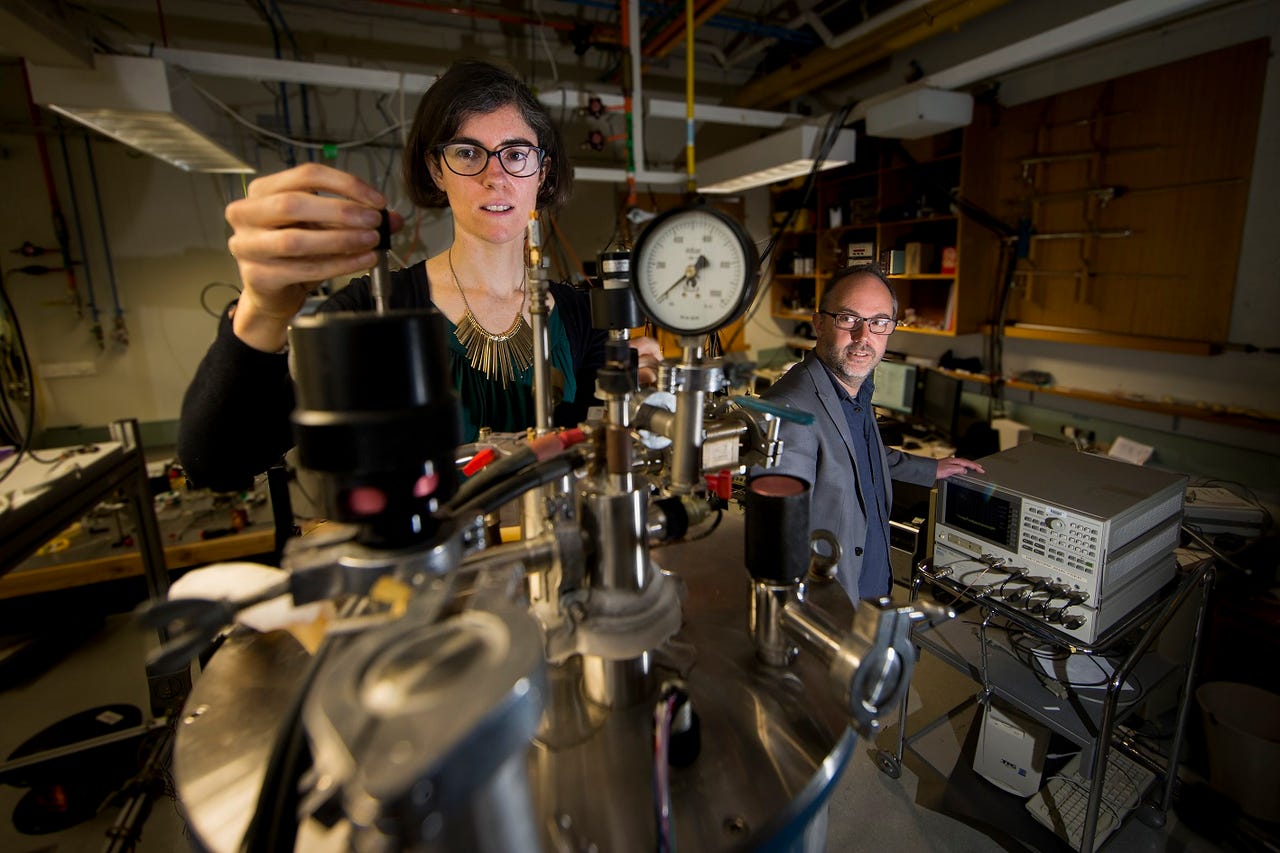ANU brings 10-year-old quantum internet theory to life


Dr Rose Ahlefeldt and Matthew Sellars operating a high-resolution dye laser, used to study rare earth crystals.
A team of researchers at the Australian National University (ANU) has announced a quantum development, proving that an erbium-doped crystal is the perfect material to form the building blocks of a quantum internet.
Led by associate professor Matthew Sellars, the team has shown an erbium-doped crystal is uniquely suited to enable a global telecommunications network that harnesses the "weird properties" of quantum mechanics.
He said a telecom-compatible quantum memory is a vital component for a practical quantum internet.
"We had this idea 10 years ago, but many of our peers told us that such a simple idea couldn't work," Sellars explained. "Seeing this result, it feels great to know that our approach was the right one."
The work from ANU researchers demonstrates how to dramatically improve the storage time of a telecom-compatible quantum memory, with the university noting it is a crucial challenge that has eluded researchers worldwide.
According to the researchers, erbium, a rare earth ion, has unique quantum properties and operates in the same 1550-nanometre band as today's telecommunications infrastructure. This makes it compatible with fibre-optic cables in existing networks, ANU explained, and eliminates the need for a conversion process.
The researchers have shown that erbium ions in a crystal can store quantum information for more than a second, which is 10,000 times longer than other attempts, and is long enough to one day send quantum information throughout a global network.
"Memories allow us to buffer and synchronise quantum information, operations necessary for long-range quantum communication," said Dr Rose Ahlefeldt, DECRA Fellow at ANU and the Centre for Quantum Computation and Communication Technology (CQC2T) at ANU.
"At the moment researchers are using memories that don't work at the right wavelength and have to employ a complicated conversion process to and from the communications wavelength. This can be inefficient, and means they have to do three very difficult things instead of just one."
Sellars said the new technology can also be operated as a quantum light source or used as an optical link for solid-state quantum computing devices, connecting them to the quantum internet. ANU also said its material is compatible with existing fibre optics, and, given its versatility, it will be able to connect with many types of quantum computers including CQC2T's silicon qubits and superconducting qubits such as those being developed by Google and IBM.
"This result is so exciting to me because it allows us to take a lot of the in-principle work we've demonstrated and turn it into practical devices for a full-scale quantum internet," Sellars added.
A team of physicists at ANU successfully completed an experiment to stop light last September, another critical step in developing future quantum computers.
At the time, the university likened the advancement to a Star Wars endeavour, saying the team performed something similar to the way Kylo Ren used the force to stop a laser blast.
"Optical quantum computing is still a long way off, but our successful experiment to stop light gets us further along the road," said Jesse Everett from the Research School of Physics and Engineering and Australian Research Council Centre of Excellence for Quantum Computation and Communication Technology at ANU. "It's pretty amazing to look at a sci-fi movie and say we actually did something that's a bit like that."
Another team of ANU physicists in January invented a tiny device using infrared that creates the highest-quality holographic images ever achieved.
At the time, lead researcher and PhD student at the ANU Research School of Physics and Engineering Lei Wang touted the complex holographic image advancement as opening the door to imaging technologies such as those seen in science fiction movies.